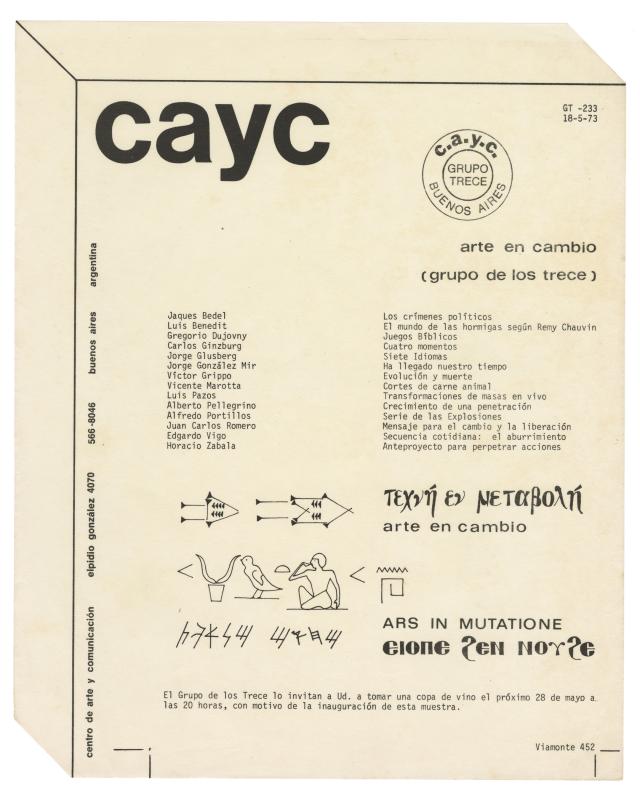Ever since it was founded, the CAYC (Centro de Arte y Comunicación), helmed by the cultural promoter, artist, and businessman Jorge Glusberg, was intended as an interdisciplinary space where an experimental art movement could flourish. The establishment of collaborative networks connecting local and international artists and critics played an important role in this process.
The early 1970s was a time of escalating conflict, when the sociopolitical situation was the subject of fierce discussion. Debates about the role of art and the artist became increasingly heated in a radical climate in which many challenged (some even renounced) the practice of art in favor of political action.
This newsletter announces a performance by the musician Mario Alberto Costa at the opening of an exhibition of works by the Grupo de los Trece in Arte en Cambio at the CAYC (GT- 233; doc. no. 1476435). Costa was a member of Canto Popular Urbano (CPU), a group of politically committed singer-songwriters that was started in December 1972 at the suggestion of Martín “Poni” Micharvegas, a psychiatrist, poet, and painter, who had performed at the Instituto Torcuato Di Tella (Canciones de fogueo, 1969 and Simulacro, 1970). The CPU’s works were inspired by folklore, tango, and urban music with lyrics that defined their compositions as “combative” or as “protest” songs.
The idea of art as a model for social change, a very topical theme for the CAYC at that time, was part of a turbulent period in Argentina’s history. National elections in March 1973 brought an end to the military dictatorship that had taken power in 1966. In May the inauguration of Héctor J. Cámpora and the return of Juan Domingo Perón created a mood of democratic optimism against an escalation of uncontrollable violence. There was fractious and divisive tension among different sectors of the political spectrum (conservatives) and the establishment of armed groups (guerrillas).

